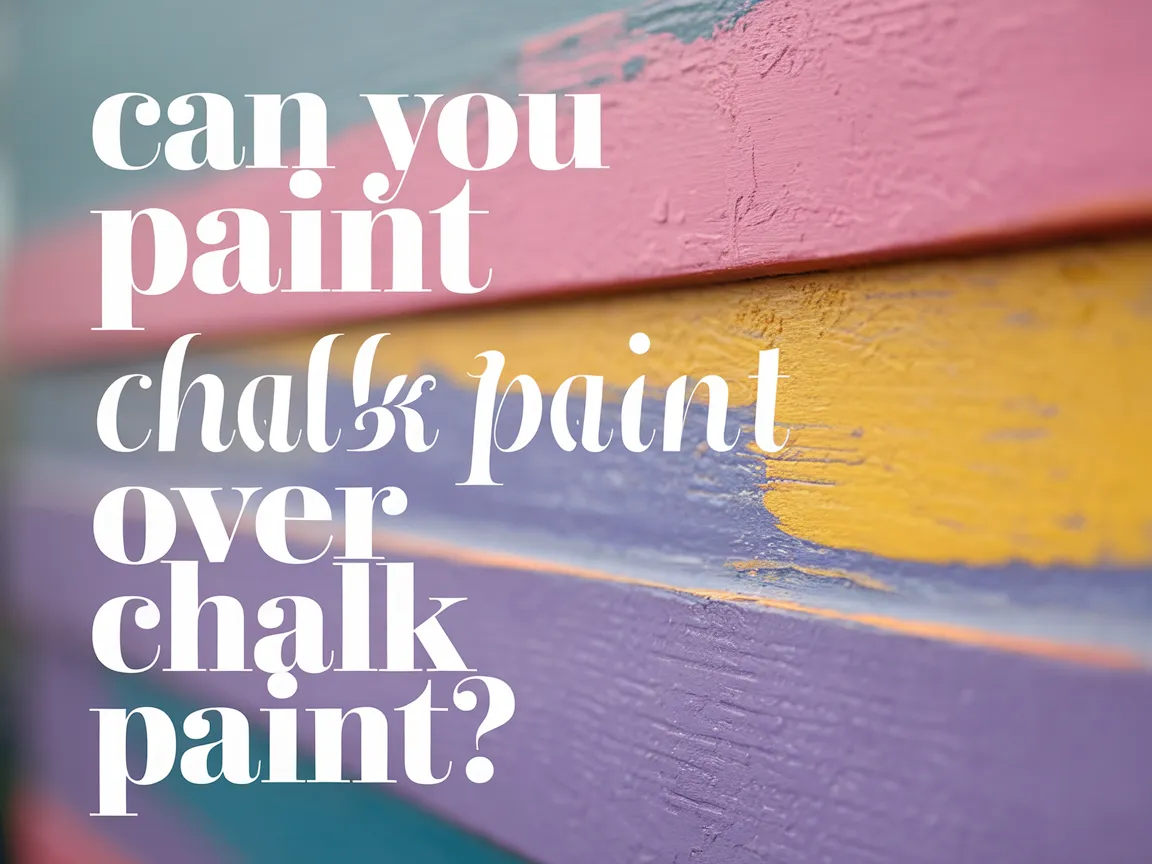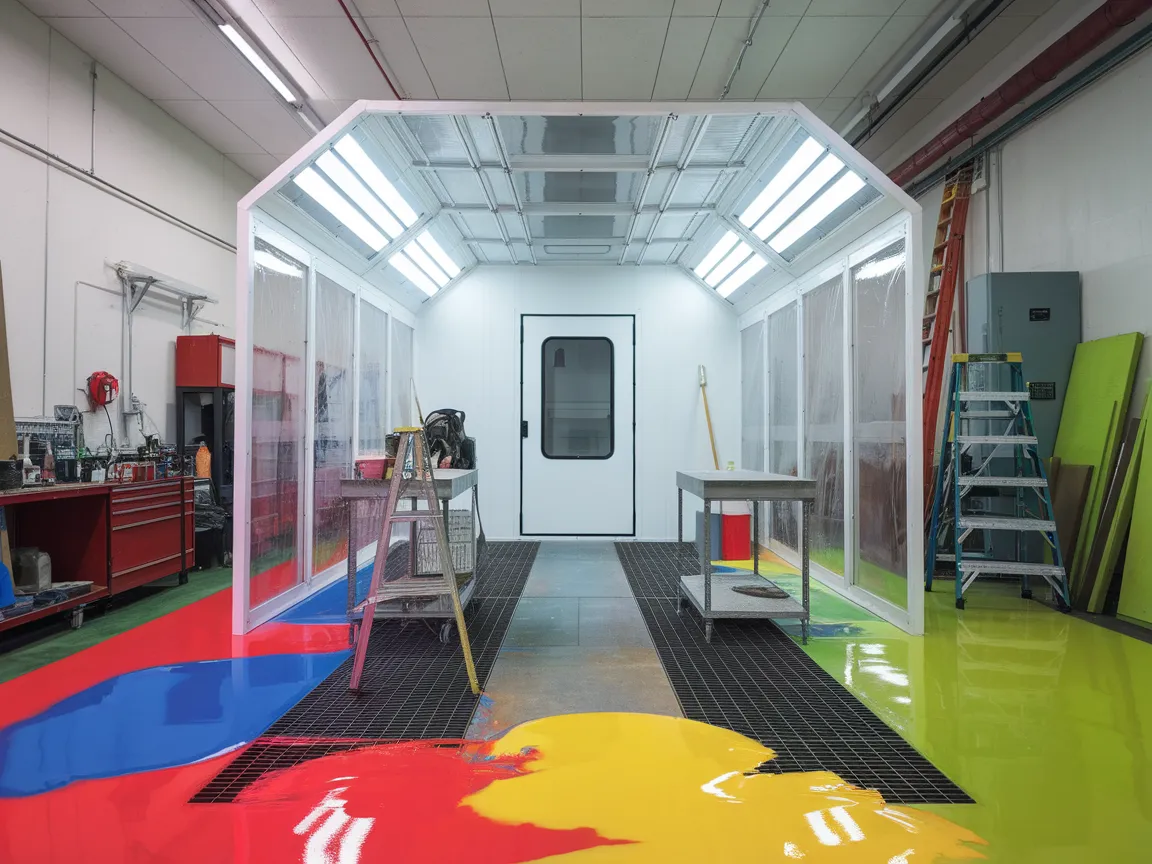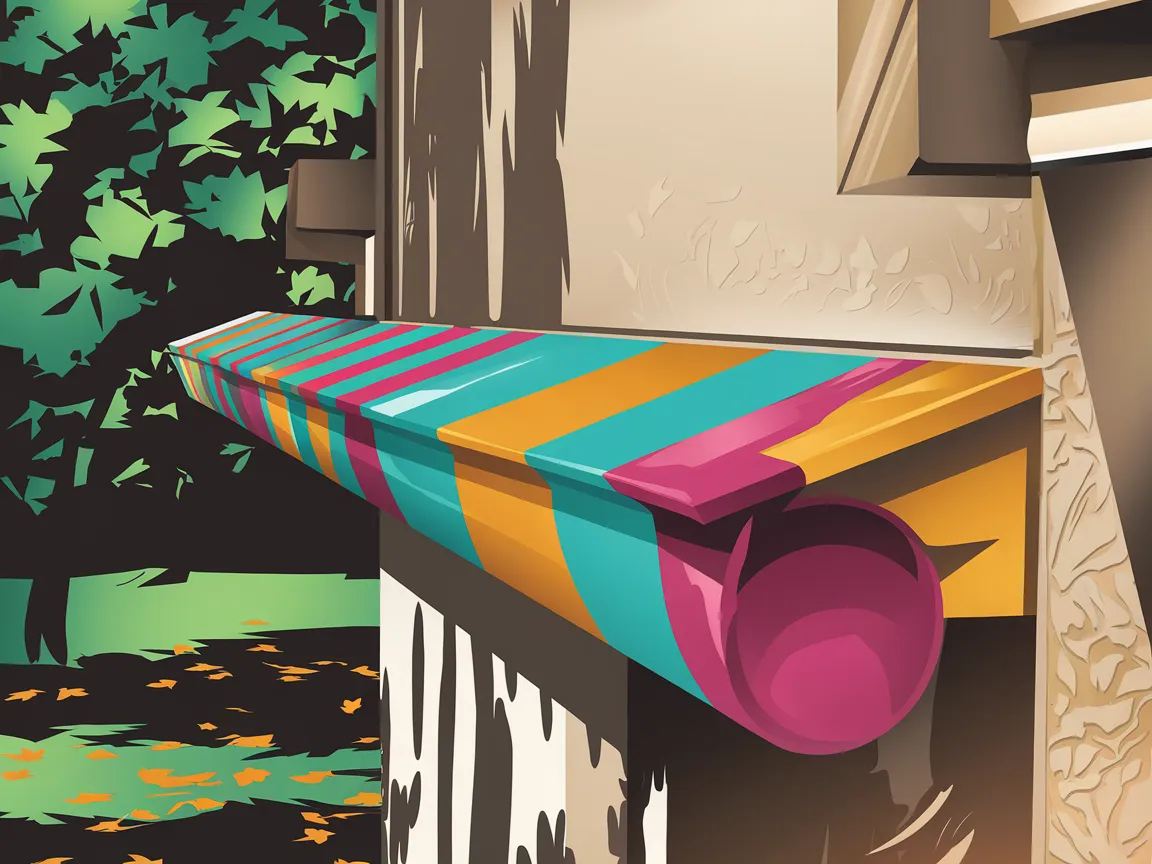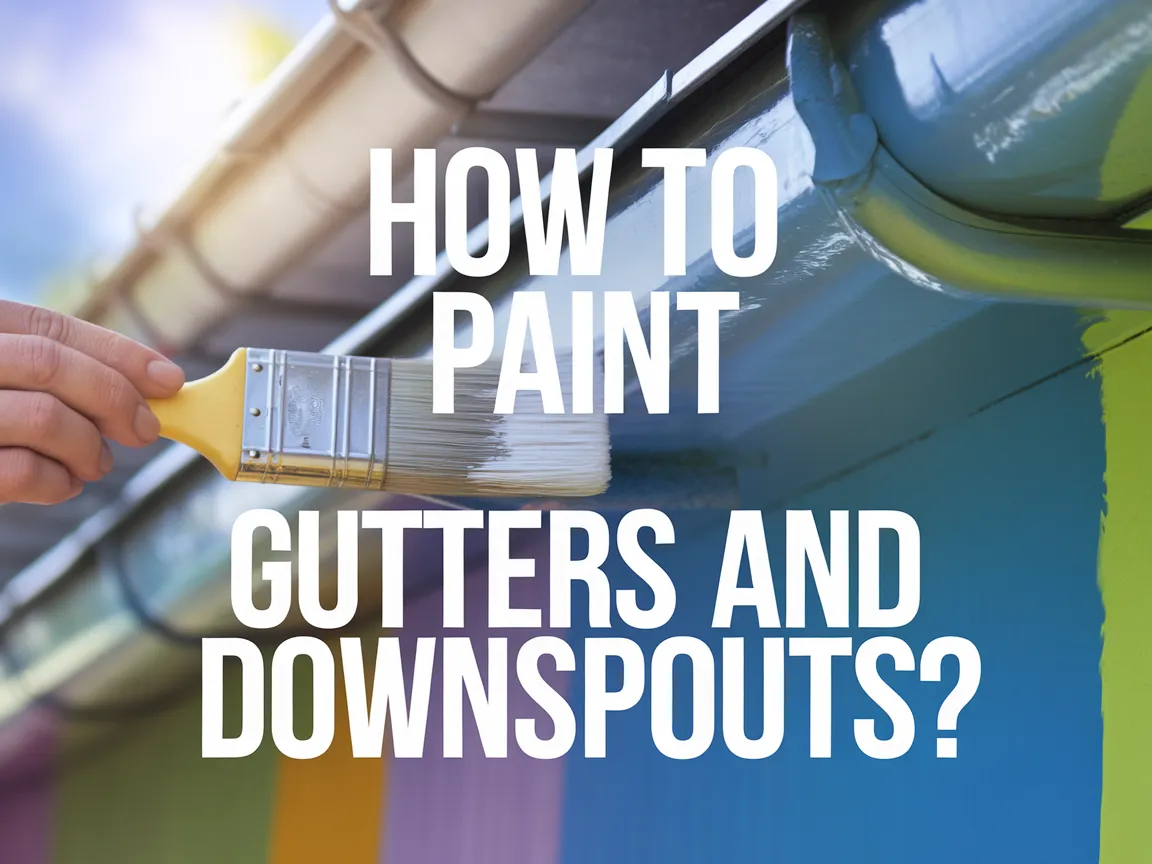Can You Paint Plantation Shutters?
Plantation shutters are fancy window coverings that let light in while giving you privacy. Imagine a special door with slats that can open and close, just like a big sun hat for your windows!
So, can you paint plantation shutters? It’s really important to know how to do it right. I once painted mine, and it turned out I used the wrong paint, which made things messy and sad.
In this guide, you’ll find out about what type of paint for shutters works best, important tips before you start, a step-by-step guide to painting, and common issues you might face. We’ll also explore creative DIY project ideas and finishing touches for that professional look!
Contents
- 1 Can You Paint Plantation Shutters?
- 2 What Are Plantation Shutters?
- 3 Important Considerations Before You Start
- 4 How to Prepare Plantation Shutters for Painting
- 5 Painting Techniques for Different Materials
- 6 Step-by-step Guide to Painting Plantation Shutters
- 7 Types Of Plantation Shutters That Can Be Painted
- 8 Factors Affecting Your Painting Project
- 9 Common Issues When Painting Plantation Shutters
- 10 Finishing Touches for a Professional Look
- 11 Best Practices for Maintaining Painted Plantation Shutters
- 12 Comparative Analysis of Paint Types
- 13 Creative DIY Project Ideas for Plantation Shutters
- 14 Frequently Asked Questions About Painting Plantation Shutters
- 15 Conclusion
- 16 Additional Resources
Can You Paint Plantation Shutters?
Yes, you can definitely paint plantation shutters! For the best results, use a high-quality, durable paint suitable for the material—like acrylic or latex for wood. Make sure to clean them first for smooth application. Just remember, if they’re made from vinyl, choose a paint specifically designed for vinyl shutters. When selecting colors, you might wonder if using the same shade for both ceilings and walls creates a cohesive look to enhance room design.
The Finishing Touch
A freshly painted wall is a blank canvas. The best way to bring your room to life is with a single piece of statement art that ties everything together.
Browse Wall Art at Big Wall DecorWhat Are Plantation Shutters?
Plantation shutters are interior window coverings with wide, adjustable louvers. Typically made from wood or synthetic materials, these shutters provide excellent light control and insulation. They often come in sizes like 2.5 inches (6.35 Cm), 3.5 inches (8.89 Cm), and larger louvers for a modern touch. These window treatments can block up to 99% of UV rays.
You might wonder, can you paint plantation shutters? I’ve painted some in my home, and it took much longer than I expected! Selecting the right paint can be tricky, and I learned that certain materials require specific paint for the best results. Exploring protective options such as ceramic coating single stage paint might enhance durability and finish quality.
I’ve used plantation shutters to create a softer light atmosphere. It’s fascinating to see how they transform a space while also discussing how to paint exterior shutters. The right technique and paint choice can elevate their look without compromising functionality. Investing your time means considering how much to paint window shutters—it’s more than just dipping a brush! To further explore protective measures for surfaces, you can find out if you can ceramic coat paint protection film.
Important Considerations Before You Start
What do you need to prepare before painting plantation shutters?
- High-Quality Exterior Paint: You’ll need paint like Behr Premium Plus Ultra, designed for vinyl surfaces. This ensures durability and a smooth finish.
- Paint Sprayer: A sprayer such as the Wagner FLEXiO 3000 applies paint evenly and quickly, saving you time and effort on tricky corners.
- Foam Roller: Use a 4-inch foam roller like Purdy White Dove for tight areas. It combines precision with a flawless finish, especially for smaller slats.
- Painter’s Tape: Get high-quality tape like FrogTape. It keeps your edges sharp and prevents paint from seeping onto unwanted areas.
We have now covered key factors to consider before starting your project. Next, we will discuss how to prepare plantation shutters for painting.
Also See: Can Chalkboard Paint Be Used Outdoors? Find Out Here!
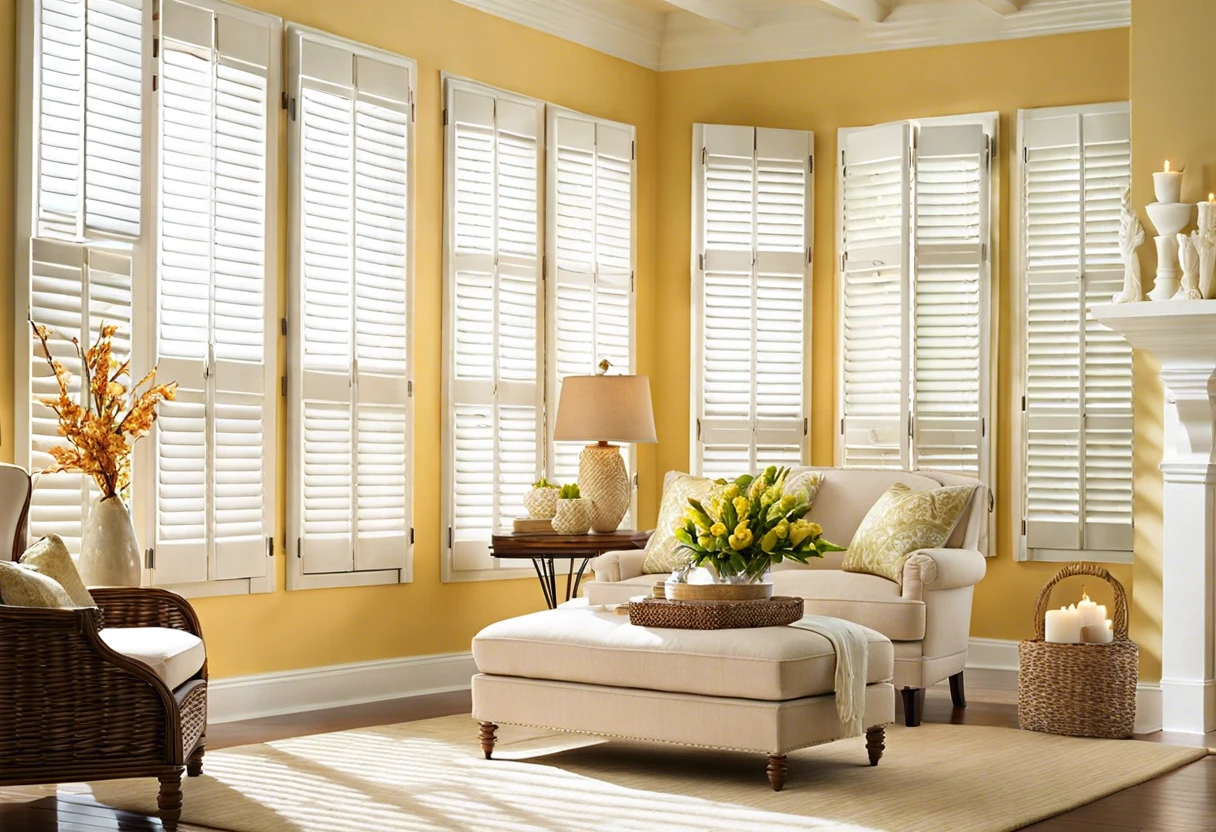
The Finishing Touch
A freshly painted wall is a blank canvas. The best way to bring your room to life is with a single piece of statement art that ties everything together.
Browse Wall Art at Big Wall DecorHow to Prepare Plantation Shutters for Painting
Proper prep work sets you up for a successful paint job. Here’s how you do it right.
-
Remove Shutters Carefully
Take down your shutters gently to avoid damaging them. Use appropriate tools like a screwdriver.
-
Cleaning Thoroughly
Clean with a mix of 1 part vinegar to 4 parts water for a natural solution. This helps remove grease and dust.
-
Sand the Surface
Lightly sand wooden shutters with 220 grit sandpaper (0.08 mm) to smooth out imperfections, ensuring better paint adhesion.
We covered how to prepare plantation shutters for painting. We will now cover painting techniques for different materials.
Painting Techniques for Different Materials
Different materials need different techniques. Check out the best methods below.
| Material Type | Best Technique | Recommended Tools |
|---|---|---|
| Wood | Brush or Roller | Natural Bristle Brush, Foam Roller |
| Vinyl | Aerosol Spray | Spray Can |
| Composite | Primer and Brush | High-density Foam Roller |
| Aluminum | Spray or Roll | HVLP Sprayer, Foam Roller |
So far we covered various painting methods for different surfaces. Let’s look at the next section on painting plantation shutters.
Step-by-step Guide to Painting Plantation Shutters
Here are the steps to paint plantation shutters.
-
Preparation Of Shutters
Remove your shutters from the window. This prevents overspray from getting on your walls or trim.
Clean the shutters thoroughly. Use a mixture of water and mild soap to remove dirt. For vinyl shutters, this step is crucial as dirt can prevent paint from sticking properly.
-
Selecting the Right Paint
Choose high-quality, exterior-rated paint if your shutters are exposed to the elements. For vinyl shutters, select paint made for plastic surfaces to ensure lasting durability.
Consider water-based paints since they dry faster and have lower VOCs (Volatile Organic Compounds). Remember, darker colors may absorb more heat, affecting durability, especially on larger surfaces. You can use acrylic paint on different surfaces, and learning about exterior painting techniques may help in selecting the right paint.
-
Priming the Shutters
Apply a primer compatible with your paint choice. One coat is best for both wood and vinyl shutters, as it helps the paint adhere and keeps the finish smooth.
Let the primer dry completely before proceeding. This usually takes 1-2 hours, but check the product instructions for exact drying times.
-
Painting Process
Paint using a high-quality brush or spray can, depending on your desired finish. Apply thin, even coats and allow the paint to dry between layers—2 to 3 coats are typical for a solid finish.
Don’t rush! Patience leads to a cleaner, more professional finish. Let each coat dry completely, usually around 24 hours for major projects.
-
Reinstallation and Final Touches
After drying, gently reinstall your shutters. Ensure the hardware and positioning are the same; this helps everything function properly.
Examine your work, and if needed, make touch-ups by applying extra paint to any mishaps. Voila! You’ve successfully upgraded your plantation shutters.
We covered a step-by-step guide for painting plantation shutters. We will now cover the types of plantation shutters suitable for painting.
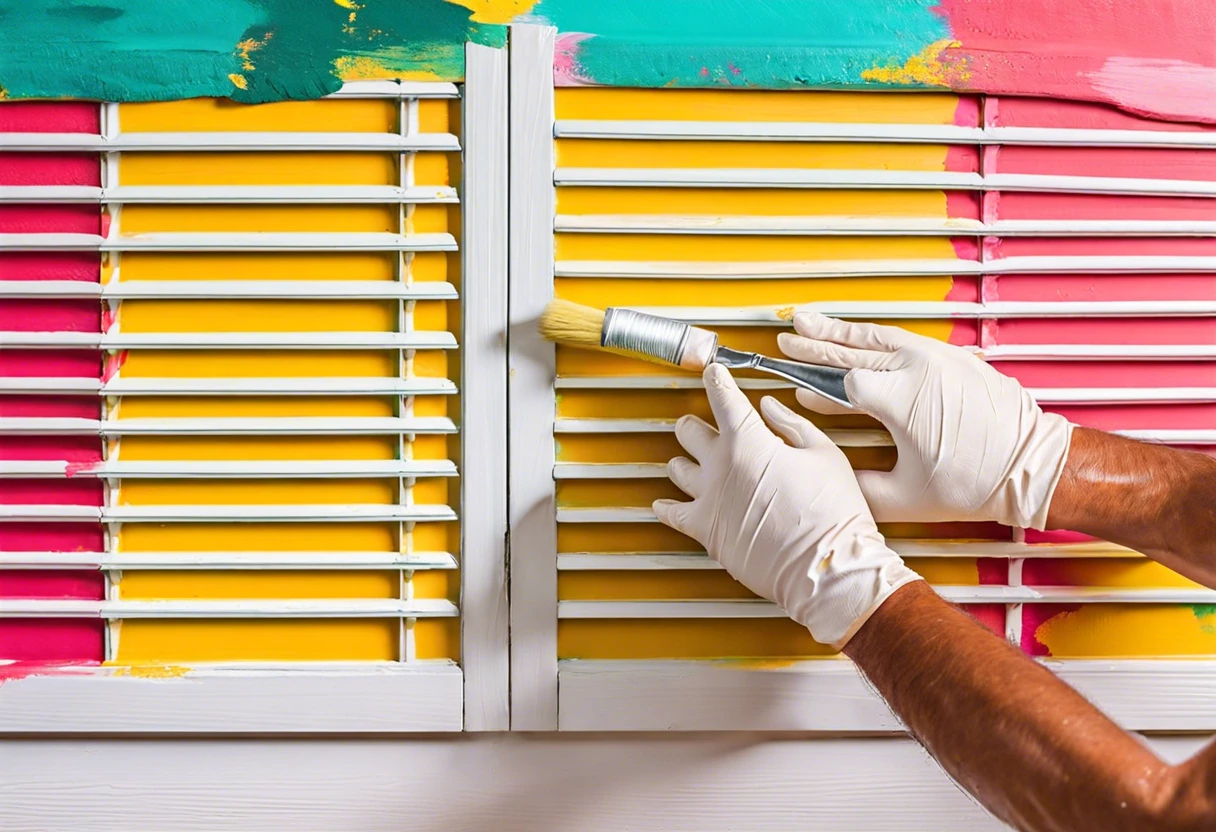
Types Of Plantation Shutters That Can Be Painted
Let’s discuss the different types: Wood, Vinyl, Composite, and Aluminum.
-
Wood Shutters
Wood shutters are a classic choice and can handle various paint types. You can use latex or oil-based paints for a smooth finish.
-
Vinyl Shutters
Vinyl shutters are popular for their durability, but painting them requires specific paints. Always choose exterior acrylic paint for proper adhesion.
-
Composite Shutters
Composite shutters combine wood and synthetic materials, making them versatile. They can be painted, but opt for high-quality, weather-resistant paint for the best results.
-
Aluminum Shutters
Aluminum shutters are lightweight and rust-resistant but need special paint for optimal adhesion. Use a primer before applying exterior paint for a long-lasting finish.
After countless tries and adjustments, I’ve found painting wood shutters gives the richest, most satisfying look. The texture and grip make them easy to work with, turning even a novice into a craftsman. If you’ve ever wondered about painting something on a larger scale, you might want to explore how to paint a car.
Factors Affecting Your Painting Project
What factors influence your ability to paint your shutters successfully?
-
Material Type: The material, like vinyl or wood, determines paint selection.
-
Existing Finish: A glossy finish may require stripping to ensure new paint adheres well.
-
Weather Conditions: Humidity and temperature affect drying time and paint adhesion.
-
Paint Quality: High-quality paint can significantly improve durability.
Common Issues When Painting Plantation Shutters
When my friend painted her plantation shutters, she discovered they were made of vinyl. She didn’t know you can’t just use any paint! It’s crucial to choose a paint designed for vinyl to prevent peeling. If you’re considering painting cement surfaces, you need to understand which paints work best on cement.
To fix this, she used an exterior acrylic latex paint specifically for vinyl surfaces. Make sure to apply two coats for durability, allowing 2–4 hours of drying time between layers.
The Finishing Touch
A freshly painted wall is a blank canvas. The best way to bring your room to life is with a single piece of statement art that ties everything together.
Browse Wall Art at Big Wall Decor
Finishing Touches for a Professional Look
After you’ve painted your plantation shutters, let them cure for at least 48 hours. Use a high-quality clear sealer, like Minwax Polycrylic, applied in 2-3 thin coats for protection.
Inspect your finished shutters for drips and uneven surfaces. Use fine sandpaper (220 Grit) to smooth out imperfections and ensure edges are clean and sharp.
If this isn’t your first time painting these shutters, consider using an airless sprayer with a 0.015-inch (0.38 Mm) tip size and a pressure of 2,000 psi (14 Mpa) for an even color.
Best Practices for Maintaining Painted Plantation Shutters
Keeping your painted plantation shutters looking fresh takes some effort. Here are some best practices.
-
Regular Dusting
Use a soft cloth or microfiber duster to wipe down your shutters every couple of weeks. This removes dust and prevents buildup.
-
Gentle Cleaning
For deeper cleaning, mix a few drops of mild dish soap in warm water. Wipe down with a damp cloth. Avoid harsh chemicals that can damage the paint.
-
Avoid Excessive Moisture
Too much moisture can peel the paint. Never soak the shutters; just lightly dampen your cloth.
Comparative Analysis of Paint Types
Choosing the right paint type can heavily affect your shutters. Here’s a breakdown:
| Paint Type | Durability | Best For | Average Cost (USD) |
|---|---|---|---|
| Acrylic Latex | High | Vinyl & Wood | $25 – $40 per gallon |
| Oil-Based | Very High | Wood | $20 – $30 per quart |
| Chalk Paint | Medium | Wood (for a vintage look) | $30 – $50 per quart |
| Spray Paint | Low to Medium | Quick touch-ups | $10 – $15 per can |
Creative DIY Project Ideas for Plantation Shutters
Want to spice up your plantation shutters? How about creating a beautiful shutter garden using cut-out shapes from repurposed shutters!
I would grab old plantation shutters, paint ’em in bright colors, and mount ‘em on a wall or fence. You could spend around $30-$50 for paint and hardware and it’ll take about a weekend to finish. If you’re considering a similar project for a different surface, learn how to paint the bottom of a boat effectively for guidance.
Alternatives? You can certainly try a bold, colored stain for a unique look, or install fabric over them for a soft, cozy vibe! I’ve done it myself, and trust me, it’s truly rewarding and gives your space a personal touch. If you’re considering taking on projects like painting, you might be curious about spray painting a car bumper, which can also bring excellent results.
Frequently Asked Questions About Painting Plantation Shutters
Can I Use Spray Paint on Plantation Shutters?
Yes, you can use spray paint on plantation shutters. Spray paint provides a smooth finish and quick application, making it ideal for larger surfaces like shutters.
How Many Coats Of Paint Do I Need for Plantation Shutters?
You typically need two to three coats of paint for plantation shutters. This ensures an even color and good durability, especially if you’re covering a light color with a darker one.
What Type Of Paint is Best for Wooden Plantation Shutters?
Water-based latex paint is best for wooden plantation shutters. It dries quickly and provides clean, easy application, plus it’s less yellowing compared to oil-based paints.
Can I Paint Faux Wood Plantation Shutters?
Yes, you can paint faux wood plantation shutters. Use high-quality, water-based paint for the best results. This type ensures adhesion to the synthetic materials used in faux wood.
How Should I Clean Painted Plantation Shutters?
You should clean painted plantation shutters with a damp microfiber cloth. This method prevents scratches and maintains the paint’s integrity, keeping your shutters looking fresh.
What Kind Of Paint for Vinyl Shutters?
Use 100% acrylic latex paint for vinyl shutters. It’s flexible and can handle the material’s expansion and contraction with temperature changes while providing UV protection.
How Much to Paint Window Shutters?
It costs about $25 to $50 (USD) per shutter to paint them professionally. It’s a smart investment that refreshes your home’s appearance and protects the wood from weather damage.
How to Paint Outdoor Shutters?
To paint outdoor shutters, remove them from the house, clean them thoroughly, and apply a primer before your top coat. This ensures better adhesion and durability against outdoor elements.
How to Paint Outside Shutters?
To paint outside shutters, protect surrounding areas with drop cloths, and use brushes or spray paint for an even finish. Ensure you use weather-resistant paint for longevity.
Also See: Can Laminate Be Painted? Transform Your Surfaces!
Conclusion
We covered what plantation shutters are, important considerations before you start, a step-by-step guide for painting, recommended color palettes, types that can be painted, factors affecting your project, common issues to watch for, and creative DIY ideas.
I hope these painting tips are helpful as you explore the question, can you paint plantation shutters? In short, yes, you can paint them; just be sure to select the right type of paint and adhere to the steps we’ve discussed for optimal results.
For further insights and guidance, check out Paint Answers.
Additional Resources
- Edwards, B. (2012). Drawing on the Right Side of the Brain. New York, NY: TarcherPerigee.
- Can you Paint Shutters? | Shutters Advice
- Can Plantation Shutters be Repainted or Stained?
Experienced interior designer with 15+ years in transforming spaces, blending artistry with expertise in color and design. Rhode Island School of Design graduate, specializing in restorations and modern makeovers.
Exterior, Wall






